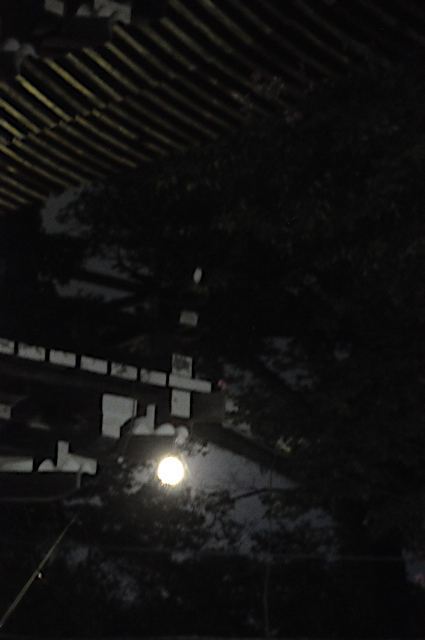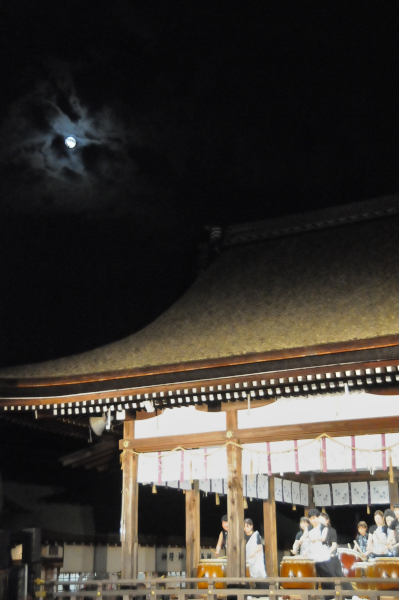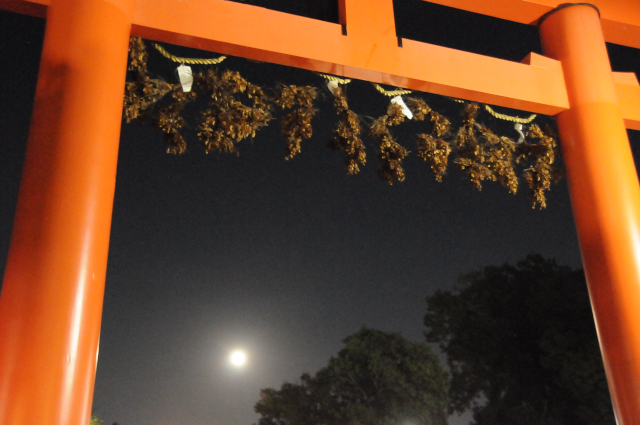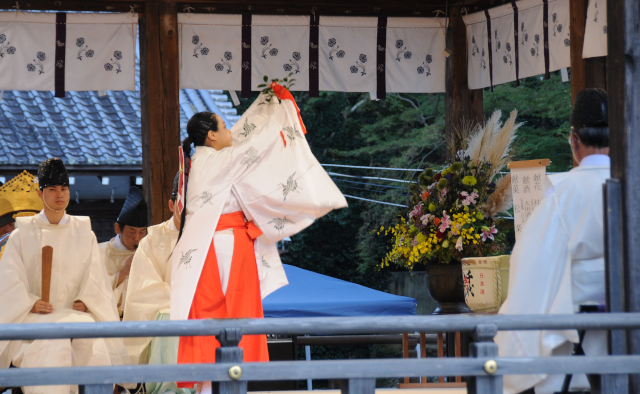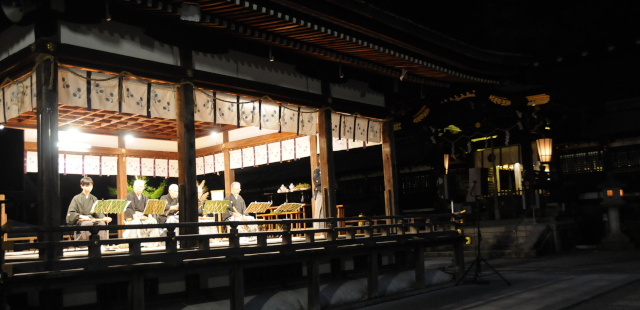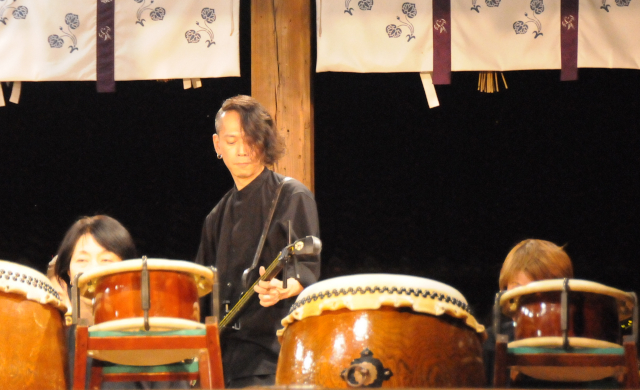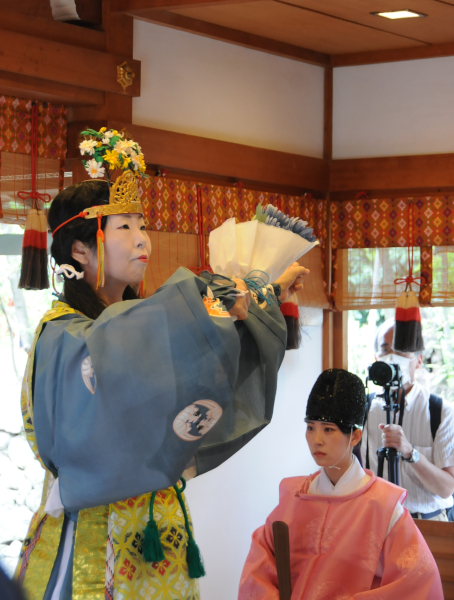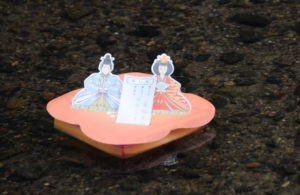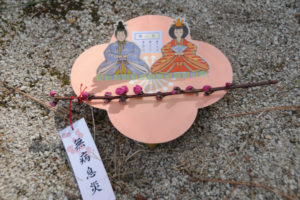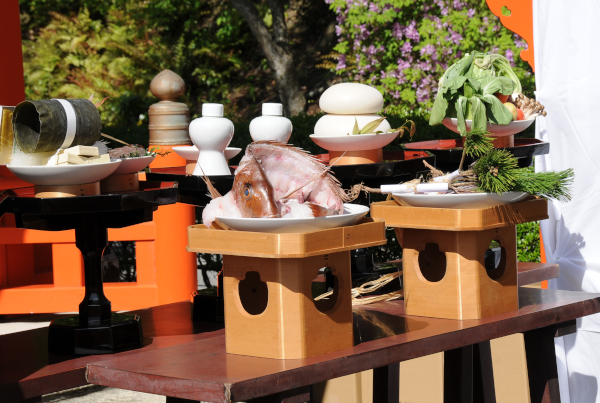Yesterday was setsubun, the last day of winter in the traditional calendar. It is said that between the seasons there is a gap through which evil demons enter the world. Obviously, this is not good, so they have to be repelled – by throwing roasted beans at them while shouting “oni wa soto, fuku wa uchi”. I wrote about setsubun and the ceremony at Kyoto’s Yoshida Shrine on this blog before (and also on What’s up in Kyoto by the way), if you are curious about details.
Yesterday I went to two setsubun rituals. In the morning, a friend of mine invited me to the temple were she usually goes to. First, there was a normal worship with lots of chanting done by the congregation, which was the first time I experienced this – usually, it’s only the monks chanting. Afterwards, there was a short sermon by the current head of the temple (broadcast from Tokyo, another first time for me) and then there was the mamemaki bean throwing. My friend’s mother was smart enough to bring a large shawl that she draped on our laps, so we got an extra amount of lucky beans without straining too much.
After lunch, we went to Rozan-ji temple, where Kyoto’s second largest setsubun ritual (after the one in Yoshida shrine) is taking place. Here, there is a Buddhist ceremony taking place inside the temple, and while only selected guests may enter, you can hear the chanting outside as well. Then, all of a sudden, three scary demons in red, green, and black appear on the scene, wielding a sword and a torch, an axe, and a mallet. They perform a kind of dance on stage and slowly and with lots of looking about, approach the temple and finally enter it.
Inside, the priests appear undeterred from their ritual and keep on chanting as if nothing has happened. Unfortunately, I could not see what was going on, but after a while, the three demons ran out of the temple, without their weapons and staggering from left to right. They disappeared somewhere at the back of the precinct, never to be seen again – setsubun mission accomplished!
Right afterwards, an archer came out and shot arrows into the four cardinal directions. This is meant to create a kind of blessed circle around the temple, which evil demons cannot cross. Catching one of these arrows is also considered lucky, and if you do, they should be displayed in the altar of the home or, lacking one, near the entrance door.
Finally, it was time for the setsubun highlight, the mamemaki bean throwing. Some of the priests and other invited people came onto the stage where just before the demons had danced, and started shouting “oni wa soto” while throwing beans to the spectators. Besides the lucky beans that were covered in white and pink sugar-coating (and were quite delicious), they also threw small mochi into the crowds. Some of them had a stamp on them saying “lucky”, and you could exchange these mochi for a sacred arrow.
There was quite some scrambling for the beans and the mochi. It’s surprisingly hard to catch them, but people were just as happy to pick them up from the ground (which meant more scrambling). I was not lucky enough to catch an arrow, nor did I catch one of the “lucky” mochi. I did catch one normal mochi though and picked up a second one, and one of the lucky beans caught in my collar.
All in all, with all the beans I got throughout the day and the two mochi, I think I will be decked in with luck for the time being. Which is always a good thing, I think we can agree on that!
I’ll add some pictures tomorrow!
